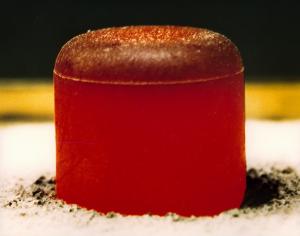Blog
This Sucker’s Nuclear?
16 April 2015
 NASA/JPL
NASA/JPLWe often imagine space probes as having large solar panels in order to provide them with the electrical power necessary to do cool science. While many spacecraft do have solar panels, there are some cases where such panels either won’t work, or aren’t enough by themselves. In these cases, we typically rely on an alternative energy source: nuclear power.
This alternative is known as a radioisotope thermoelectric generator, or RTG. It works by using a radioactive material as a power source. Typically the isotope used is plutonium 238, which is created synthetically in nuclear reactors. It has a half-life of 87.7 years, which means it can provide fairly consistent power over several decades. The Voyager probes, launched in 1977, continue to operate on RTG power.
 Wikipedia
WikipediaAn RTG doesn’t generate electricity directly, but rather the radioactive decay is shielded so that the RTG provides a source of heat. The heat is then converted to electric power through a thermocouple. When a conductor is subjected to a thermal gradient (where one side is hot and the other side cold) it produces a potential voltage. A thermocouple relies upon this principle to create electric power. Although thermocouples aren’t very efficient (only about 10% of the energy is converted to electric power) the RTG produces more than enough heat to be useful. Sometimes the RTG heat is used directly to keep the components of a probe warm.
There are some disadvantages to RTGs that prevents us from using them all the time. Solar panels are easy to build, and there’s no risk of radioactive contamination. Although there has been some concern that RTGs could cause contamination if the launch of a probe catastrophically fails, impact studies have shown that the risk is quite minimal.
The biggest drawback is that Plutonium 238 must be manufactured in a nuclear reactor. As the use of nuclear power and the construction of nuclear weapons has declined, the amount of available Pu-238 has dwindled. Since radioactive materials are somewhat fear-inducing to the general public, the use of RTGs is controversial despite the safety precautions.
But the reliability of RTGs ensure that many of our spacecraft will be nuclear powered for quite some time.